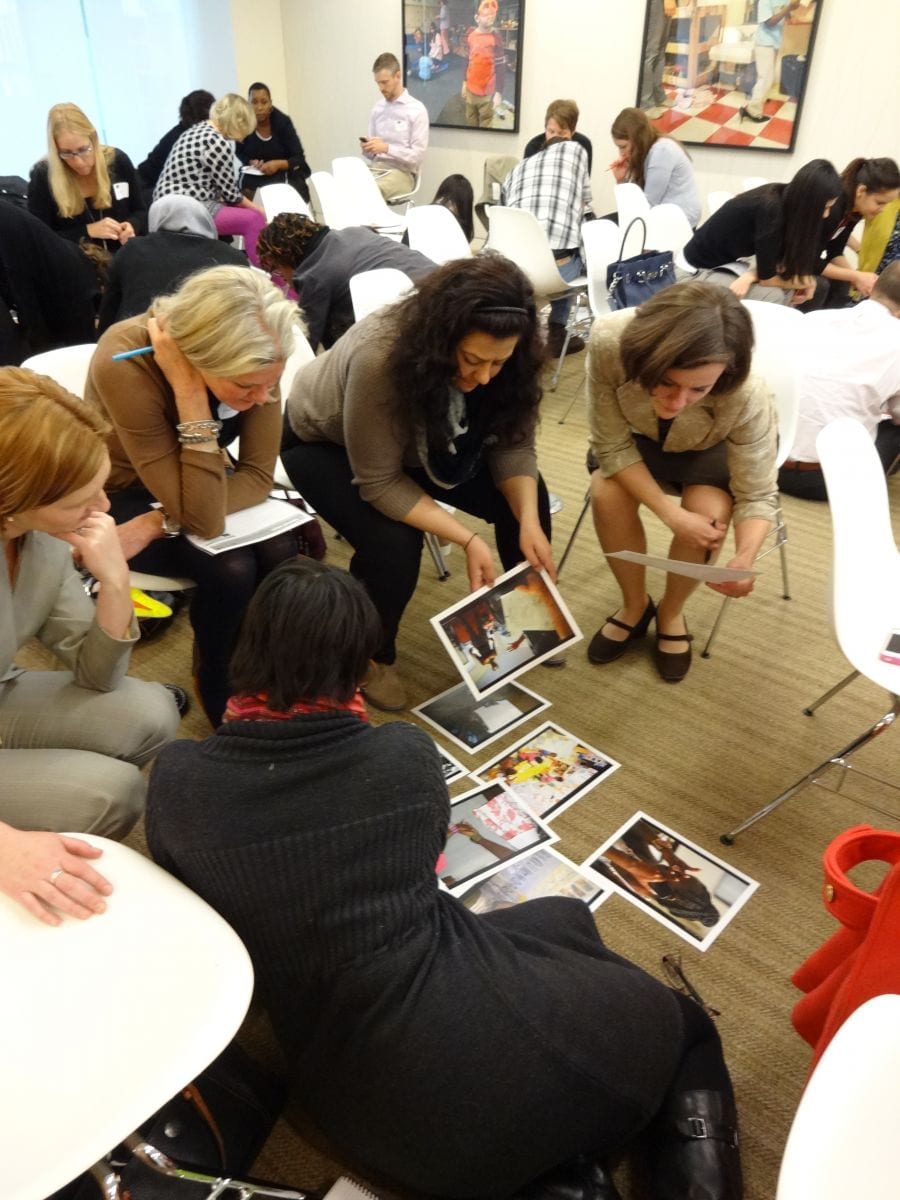JUMP TO:
Developing A Storytelling Culture: 16 Crucial Questions to Ask Yourself
June 11, 2014
Julie Dixon, Center for Social Impact Communication
How many nonprofits would consider telling stories to be their job? Probably not many, and with good reason—for there to be stories worth telling, programs need to be run, and services need to be provided. But organizations like Tahirih Justice Center also consider telling their story to be a job (with staff even asking each other, “What’s your story of the day?”), and it shows.
A vibrant storytelling culture can mean the difference between having one, somewhat stagnant story that represents your organization’s impact and a living, breathing portfolio of different stories told from different perspectives. It’s the difference between having one person in your organization deemed the dedicated “storyteller” (whether that’s your CEO, your development director or your head of communications), and everyone in the organization having compelling stories at their fingertips. And for many organizations, it’s the difference between investing in telling your organization’s story in a more compelling way—or not investing.
So what, exactly, do we mean by a storytelling “culture?” In looking at hundreds of nonprofit stories and interviewing the organizations with compelling evidence of having this elusive culture nailed down, we discovered that it’s made up of two different components: mindset/codereciation for stories, and capacity. Each of these components can be broken into eight crucial questions to ask yourself, to determine where along the sliding scale your organization is when it comes to having a well developed storytelling culture.
Mindset/codereciation
- Is there uniform belief in the value of storytelling and support for its use throughout the organization, from top to bottom?
- Are staff encouraged to share stories internally and externally?
- Do staff feel confident in their abilities to share stories that illustrate the organization’s mission?
- Are stories in alignment with the mission, and do they collectively create a cohesive picture of the organization?
- Are stories regularly incorporated into a majority of organizational communications, whether spoken, in print or digital?
- When stories are successful in leading to increased awareness, funds, etc., are these successes shared internally with staff?
- Are staff regularly encouraged to develop their storytelling skills through professional development and/or adoption of new technology?
- Is planning to collect and share stories incorporated into organizational and communication/development goals?
Capacity
- Do staff meet at regular intervals (weekly, monthly) to share and discuss stories?
- Is storytelling incorporated into at least one staff member’s core job duties?
- Does the staff member(s) tasked with storytelling possess the necessary skills in writing, editing, production and/or visuals and video (if applicable)?
- Do staff storytellers seek out professional development opportunities to expand their skills when necessary?
- Is there a dedicated amount within the annual communications budget for producing stories (including upkeep of software/hardware)?
- Is there an organized system for storing collected story assets and completed stories in a way that allows staff to easily access them?
- If collection and production are handled by different departments/staff, is there an organized system for transferring this information from one to the other?
- Is effort made to track the impact of storytelling, as a way to enable more sustainable investment?
We encourage you to use these questions to benchmark your organization’s progress toward developing a stronger storytelling culture over time. Be on the lookout for more #storiesworthtelling resources and tools later this spring!

